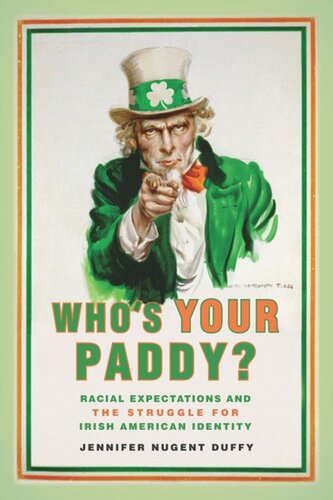

Most ebook files are in PDF format, so you can easily read them using various software such as Foxit Reader or directly on the Google Chrome browser.
Some ebook files are released by publishers in other formats such as .awz, .mobi, .epub, .fb2, etc. You may need to install specific software to read these formats on mobile/PC, such as Calibre.
Please read the tutorial at this link: https://ebookbell.com/faq
We offer FREE conversion to the popular formats you request; however, this may take some time. Therefore, right after payment, please email us, and we will try to provide the service as quickly as possible.
For some exceptional file formats or broken links (if any), please refrain from opening any disputes. Instead, email us first, and we will try to assist within a maximum of 6 hours.
EbookBell Team

4.0
6 reviewsAfter all the green beer has been poured and the ubiquitous shamrocks fade away, what does it mean to be Irish American besides St. Patrick’s Day? Who’s Your Paddy traces the evolution of “Irish” as a race-based identity in the U.S. from the 19th century to the present day. Exploring how the Irish have been and continue to be socialized around race, Jennifer Nugent Duffy argues that Irish identity must be understood within the context of generational tensions between different waves of Irish immigrants as well as the Irish community’s interaction with other racial minorities.
Using historic and ethnographic research, Duffy sifts through the many racial, class, and gendered dimensions of Irish-American identity by examining three distinct Irish cohorts in Greater New York: assimilated descendants of nineteenth-century immigrants; “white flighters” who immigrated to postwar America and fled places like the Bronx for white suburbs like Yonkers in the 1960s and 1970s; and the newer, largely undocumented migrants who began to arrive in the 1990s. What results is a portrait of Irishness as a dynamic, complex force in the history of American racial consciousness, pertinent not only to contemporary immigration debates but also to the larger questions of what it means to belong, what it means to be American.